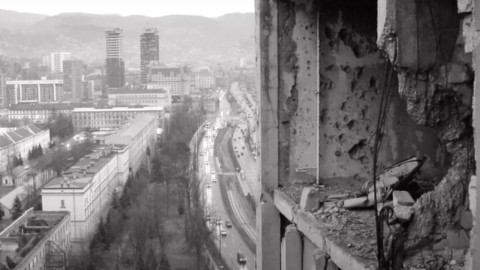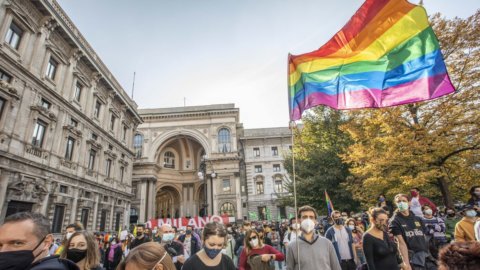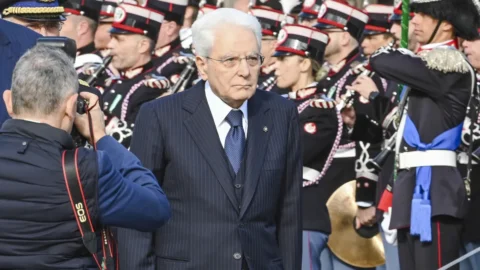Remember the siege of Sarajevo? In a month it will be thirty years, it began on April 5, 1992 and ended on February 29, 1996. According to experts, the longest siege in the history of warfare in the XNUMXth century. As the Russian army advances towards Kiev, it is summoned more and more, because it is not exaggerated to fear that the Ukrainian capital could meet the same fate as the Bosnian one.
The fierce siege of Sarajevo a few hundred kilometers from our home
The suffocation of Sarajevo by the Belgrade Serb and Bosnian Serb armies began the day before Europe recognized the independence of Bosnia Herzegovinaobviously not just any day. Even in that case, the intention was to prevent a country from choosing its own destiny and its own alliances.
At the end of that disaster there were 12 dead, over 50 wounded and so many refugees that the population of Sarajevo after the war was 64% less.
The numbers of that tragedy photographed in the official reports are chilling: during the siege there were an average of 329 explosions every day, even on 22 July 1993 3.777 were counted.
Long before the war ended in September 1993, all the buildings in the city had been damaged, 35 completely destroyed. Among these, he is always remembered with the same anguish, the National Library of Sarajevo, a place of knowledge and culture heritage of all humanity.
Here too, only numbers can give an idea of the tragedy: one million volumes were lost forever, 155 rare or precious, 478 unique manuscripts. He was saved onlyHaggadah of Sarajevo, the oldest Jewish document in Europe, brought there by the Sephardic Jews expelled from Catholic Spain to be welcomed in Muslim lands. Which demonstrates, if proof were needed, that the roles of good and bad in the history of humanity are not given once and for all. The precious document had been secured in the vault of the National Bank of Bosnia immediately after the outbreak of war, a decision which saved it from destruction.
The “Sarajevo Tunnel”
We Italians also did our part in that siege. During the four years it was interrupted only once, between 11 and 12 December 1992, to allow a group of 500 pacifists who left Italy together with Don Tonino Bello and coordinated by the Beati association to bring aid to the population. peace builders. The following year, in August, the group tried again without success. In October it went even worse, because the Italian religious and pacifist Moreno Locatelli he was hit by a sniper during the demonstration.
Those familiar with the history of the siege of Sarajevo, like the Centro Asteria, remember how in the hardest year, 1993, to allow humanitarian aid to enter the city (and circumvent the arms embargo), a tunnel, about a kilometer long, which started from the suburbs of the city and reached the airport, placed under the control of the United Nations. Arms, food and materials of all kinds passed through the "Sarajevo tunnel" for months, and even the then president (the first of Bosnia and Herzegovina) Alija Izetbegovic on a wheelchair.
The siege of Sarajevo: the role of the UN and NATO
We had to wait for the market massacre carried out by Ratko Mladic's Serbian artillery on February 5, 1994, for the UN to decide to ask NATO to intervene.
In April, NATO began an aerial bombing campaign around the capital. Then, after another massacre of civilians, they intensified: it was the campaign Operation Deliberate Force. And the Serbs were forced to surrender, the conflict was over.
But the story of those who do not want to accept history was not finished.
There was another war later, in the former Yugoslavia, between February 1998 and June 1999, the one that unleashed Serbia for the control of Kosovo, a region declared autonomous from Belgrade inhabited mainly by Albanians. This war too was ended after a military intervention by NATO. And Putin often uses it as an example to demonstrate that he was right when he moved the army to help the Russian-speaking populations of the Ukrainian Donbass: why was NATO able to help the Albanians and he can't do it with the Russians?
Thirty years later the shadows of war in Europe are still lengthening
Multicultural Bosnia was the object of desire of Croatia and Serbia. Everyone lived there: Serbs, Croats, Bosnian Muslims. They had done it more or less in peace for centuries, they could continue to do it. But, once the communist edifice had crumbled, if that model had proved successful, someone would have had to go home, leave the power. A horror just to imagine it for some types of rulers, whatever color their flag.
Ukraine is also an object of desire for Russia: it is a ramshackle, corrupt, sketchy country. But it is a free country. Since it was born, at the end of the USSR, in 1991, Ukraine has seen all the colors, with presidents who have followed one another, sometimes improbable, more often than not fragile, but chosen by vote. It is a bad example for those who have governed for over 20 years and who plan to be elected forever in the next round. As it now seems clear, even to those who have been more generous towards Moscow and its history over the years, this is the reason why Kiev - according to Putin - must be crushed and must return to the former Soviet orbit. It has already been said and written: at this point in history, Putin has shown that it is not NATO that frightens him, but the values of a world that the Western Alliance expresses. Sometimes without his knowledge.
If Kiev is saved, Sarajevo is also avenged.






History repeats itself but sometimes it seems to teach nothing